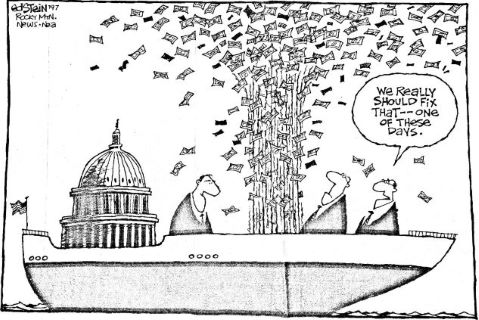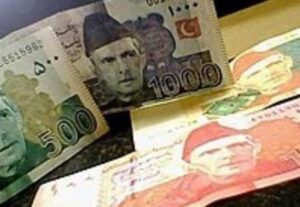A measure of economic equality

By Shahid Rizvi
In theory, an international economic order implies that the world economy is unipolar, even though it comprises different systems, zones, and disciplines – which vary in both form and content. This apparent contradiction that the world has an internationalized economy, and the world economy comprises different systems needs a close and detailed examination.
The word unipolar depicts the growth of the international economy as a whole integrated mass moving in one direction and towards one goal. It means that the international economy engulfs the national economies, which are systems at variance. An economic system is a set of functions, rules, and regulations concerning the production and consumption of wealth in a society.
Since the birth of civilization, human society has seen a number of economic systems – the latest being capitalism which has dominated the world for the past two centuries. Even the new hybrid of socialism was developed, but that experiment could not last long – it disappeared fast though it did leave its mark on the sands of time.
Capitalism rose from being a cottage industry to a manufacturing unit and then a colossal factory. At every age of its development, it changed shape. The key elements that have an impact on any economic system are the mass of wealth that produced the technology and implements for producing wealth, the ownership of the resources, and the marketing of commodities.
Thus, a system comprises all the components which govern primarily the functions for the production of wealth. In a capitalist system, the possession of capital by private hands was the initiative and incentive for boosting the system. The motive of profit gave the system firm footage. An organized market moved the commodity fast, resulting in more and more frequencies of production.
The production, in the initial stages of capitalism, was based on low-tier technology. It was also absorbent of a low quantum of capital. The whole quantity of production was consumed on a smaller market. Besides all other factors, the research and development of science and technology brought about a great revolution in capitalism. Automation and robotization made it possible to produce a thousand times more in the same duration that earlier produced a few pieces.
Computers saved humankind both labor and time. Products now sought a global market reach, and their marketing period became short indeed. One very important development was uniform international standardization, which eliminated the quality barrier and preferential demands. In fact, the technology revolution began some 50 years ago with the discovery of the nail-sized transistor – a breakthrough in the field of electronics. This revolution became the demarcation line between the old and new international economic order.
However, this high-tech revolution was restricted to a few countries including the United States, France, Germany, and the Netherlands. The rest of the world remained under the yoke of old reactionary economic systems for one reason or the other. Most of the countries on the Asian continent and the whole of Africa remained at the economic level of the Second World War wracked Europe. These countries are considered underdeveloped because of their retarded economic systems. In most of these countries, feudalism still stands high and above, blocking the way of progress. These are predominantly agricultural countries.
The economic systems of developing and under-developed countries are categorized as agricultural economies such as Pakistan mixed economy systems like India, and semi-industrialised ones like China and Korea economics depending on exports like Indonesia, Philippines and the Middle East states.
The division between North and South or rich and poor countries, however, could not divide the world in separate, watertight compartments and none is an isolated unit. The dependence of developed countries on the developing world for raw materials is evident, just as their mutual dependence on finished products and technology.
The state of interdependence and interaction ought to be scrutinized to determine the exact level of internationalization of the world economy. Developed countries have long been using the natural wealth of under-developed countries as raw materials for their industrial production. The bulk of their fuel requirements which help run their machines come from the Middle East, Jute cotton, and minerals like copper, nickel, gold, and magnesium are obtained as raw materials for their industries from developing countries.
In exchange for cheap raw materials, developed countries dumped their costly finished goods into the markets of developing countries. The relationship of interdependence was, however, maintained. The low-cost machinery along with technicians, accessories, and spares constitutes another relationship, that remains binding with the technology-starved countries where developed countries dumped their obsolete technologies.
Every production process is considered in the context of its cost-effectiveness. Cheap labour and raw material at sources are another constrained relationship between the two and this can’t be broken easily. Other factors of lowering the cost of production guarantee the same scenario. Investment is another factor. Under-developed and developing countries are naturally low-saving areas that are perennially short of capital. They are devoid of basic elements of progress. Pakistan is a good example in this regard. The incentives and dividends allowed by the government to foreign investors in the energy sector are very high but these could not be helped. The foreign investors are not giving much response. Instead, they are trying to fleece the Pakistani people by taking into account only their high rate of interest.
International trade is also one of the compulsory relationships used more often to the disadvantage of developing countries. Sometimes the credit balance of developing countries inflates, as in the case oil producing countries. But it also works to the interest of developed countries providing rich capital to them.
In developed countries, with the speeding up of knowledge and technology, skilled manpower constantly needs to be upgraded. These countries need semi-skilled manpower for developing countries to fill up certain vacancies. This causes brain drain. Similarly, their labor is accommodated in developing countries on fairly decent remuneration packages. Another aspect is the financial linkage.
The banking, stock market, bullion market, forex, and other financial institutions function on an international scale. Their twin efforts – depression and recession – are felt the world over. The scandals that hit BCCI and Barings and Black money crash are examples in this regard. In spite of the supremacy of developed countries, a relationship exists to show that an international economic order – whatever the shape of its components – does prevail.
The specific relationship between the two sets of countries is, however, a matter of concern. In all cases invariably the activities of developed countries are motivated by the rate of profit and intensity of influence. It is, however, clear that the two zones cannot survive as separate entities. Also, there is nothing to stop the flow of science and technology to developing countries besides their own advancement.
The exigencies of development are likely to bring at par all the activities in various parts of the world. The dominance of developed countries will probably not hold once differences in the level of science and technology start to diminish. That’s when the era of an international economic order – based on cooperation and partnership – is likely to begin.








